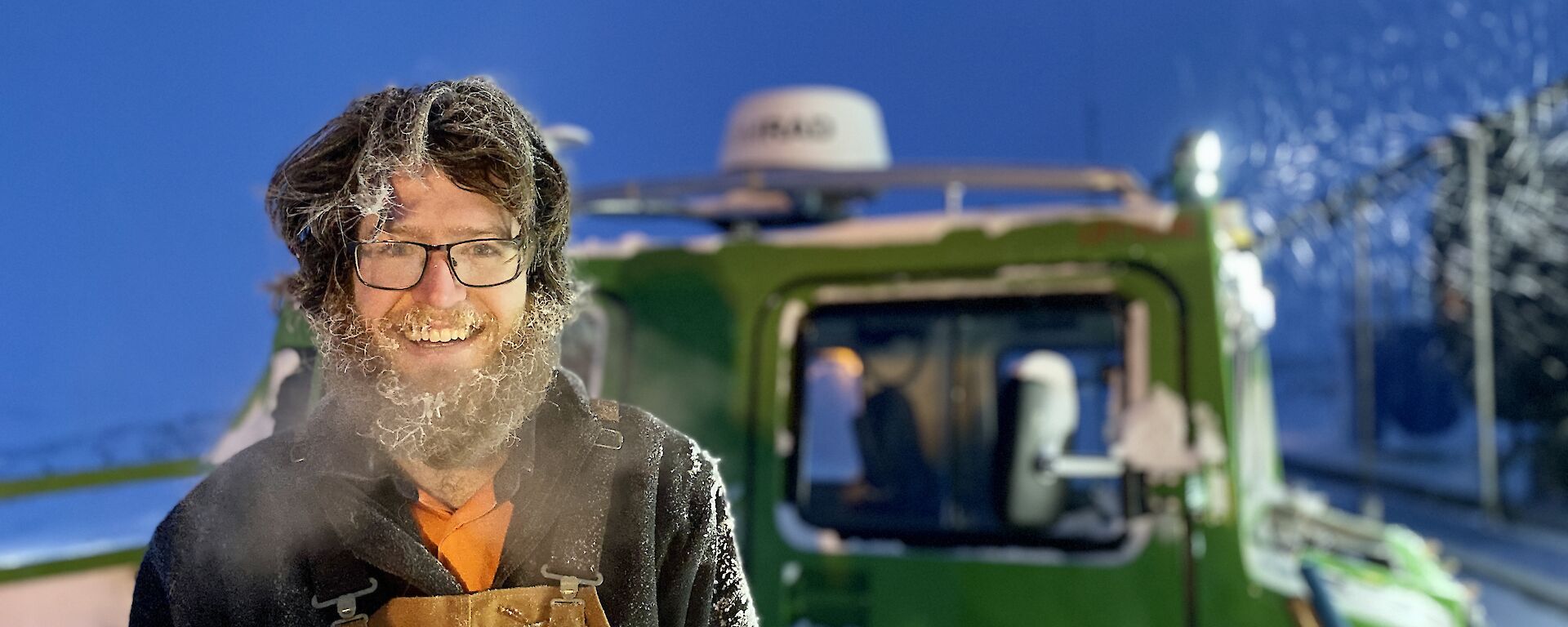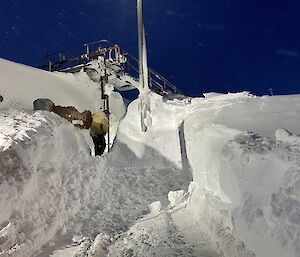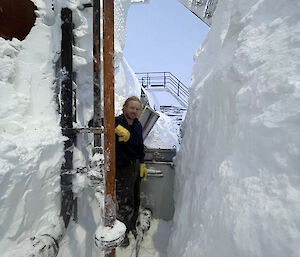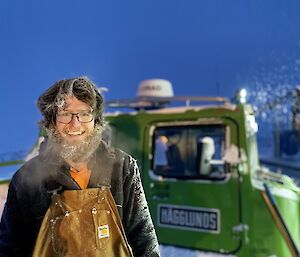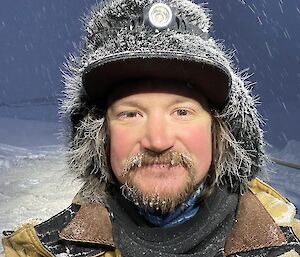“It snows a lot in Antarctica.”
“Sometimes you have to dig your way into buildings.”
“It’s really cold there, and often windy.”
These statements all fell on deaf ears when people tried to warn me of how strenuous coming down here might be. “Yeah it’ll be sick!” was my generic response to such comments.
So it snows a heap down here, and after a good dump you’ve often got to get the trusty shovel out and dig your way into any buildings you want to enter. That’s fine, snow is soft, fluffy and satisfying to dig because you can move a phenomenal amount of it with minimal effort. This isn’t always the case though for areas where the snow is allowed to sit for a few days or weeks in −15° or colder. It goes hard, really hard and you can only dig it with a shovel, get in there with a crow bar or a mattock, and you're near guaranteed to hit something fragile and break it. But even though digging hard snow is hard work, it’s still fun.
That’s what we thought anyway, right up until this year’s Midwinter fuel transfer.
The mission
In short, Casey station has two bulk fuel storage areas, the lower fuel farm at the wharf, and the upper fuel farm at the station. The two fuel farms are about 500–600 metres apart and we have to ensure we can see every inch of pipeline between them so that if there are any leaks we can spot them and stop pumping. The only area where the pipe gets buried under snow is a 25 metre length at the lower fuel farm. This has to be dug out every season before the transfer.
Take one
A few days prior to the transfer we headed down to the lower fuel farm knowing we would have a big dig on our hands, and when we got there it was indeed quite bad. The pump and valves we had to uncover were on average about 1m under the surface of the snow. We had to dig down to a pump box then follow a pipeline about 25 meters along the edge of the fuel farm’s bund. Overall our trench was about 1 metre wide, 1 metre deep, and 25 metres long. There were 7 of us on the shovels and we got it done in about an hour so it wasn’t too bad.
However, due to our old friend the “A-factor” (The ‘Antarctic factor’ – like Murphy's law, but an Antarctic version), we didn’t get to kick the transfer off for another week or so. During that time there was a pretty good blizzard. We knew this would have filled our trench in and we all thought we were prepared for what awaited us down at the fuel farm.
Take two
Patty rallied a team to accompany us down to the lower fuel farm for take two. There was me, Pat, Cam, Scotty, Dylan, Brad K, Steve, Antonio, Dr Tad and even Kyle our Station Leader…we had a cast of thousands. We arrived and went to check the trench, and to say that what we found rocked us to our cores would be a gross understatement indeed. The blizzard had filled our trench in and in addition, generated a snow drift which ranged from 1–2 metres on top of the original 1 metre depth. This meant the new 25 metre long trench would inevitably end up being roughly 3 metres deep at the deep end and about 2 metres deep at the shallow end. The drift we had to dig through was so gigantic that in one spot it was the same height as the huge 90,000L fuel tanks which make up the fuel farm (these are about 3.5–4 metres tall but we didn’t need to dig down the full height of the tanks).
Going flat out this dig took about 2.5 hours. Prior to commencement I took a look around and the distress on the faces of our voluntary helpers was as clear as crystal. “Why did I put my hand up for this?”, “What excuse can I come up with to get me out of here?”, “Someone please call me and ask for my help with something” – all thoughts that were almost definitely going through their minds!
Kyle, Tad, Steve and Pat (all station leadership team members) all looked keen though. I don’t know how they managed to avoid the anguished expressions the rest of us were wearing, but as sure as the current Antarctic day is short, they did. Good on ‘em. Kyle and Pat even got a couple of songs going to boost morale, a welcome change to the constant squeaks of 10 shovels plunging into the hardened snow and breaking chunks out.
This was probably one of the biggest digs in history, I don’t think there’s ever been a hole dug, with shovels, that was bigger. And while such a monumental task was an honour to be a part of, it came at a cost… now every time there’s a blizzard coming people start to fret that they might have to get on the shovel and dig again. I’ve heard reports that people walking around the station have heard what sounds like a shovel penetrating the snow, but when they look there is nothing there.
I should have listened more carefully to all those who tried to warn me about the snow down here, it’s serious business. We have a man here from Canada (Dave) who left Canada because of snow! That’s how serious it is.
Take heed!
– Steve 'Muscles' Middleton (Wilkins Aerodrome Mechanic – 2021).

